Excerpts from Jim Conrad's
Naturalist Newsletter
from the November 16, 2018 Newsletter with notes from a camping trip into the Petén District of northern GUATEMALA
GEOPHILA OF THE FOREST FLOOR
Last October 1, during my camping trip into northern Guatemala's Petén district, in the campground of Rosario National Park on the east side of the town of Sayaxché, in deep shade on the forest floor at the edge of the campground a delicate little herb emerged here and there from the forest litter, which stayed soaked all the time because of daily afternoons rains. Below, you can see the herb's heart-shaped leaves and very small, white flowers -- whose corolla lobes interestingly ranged in number from four to seven:
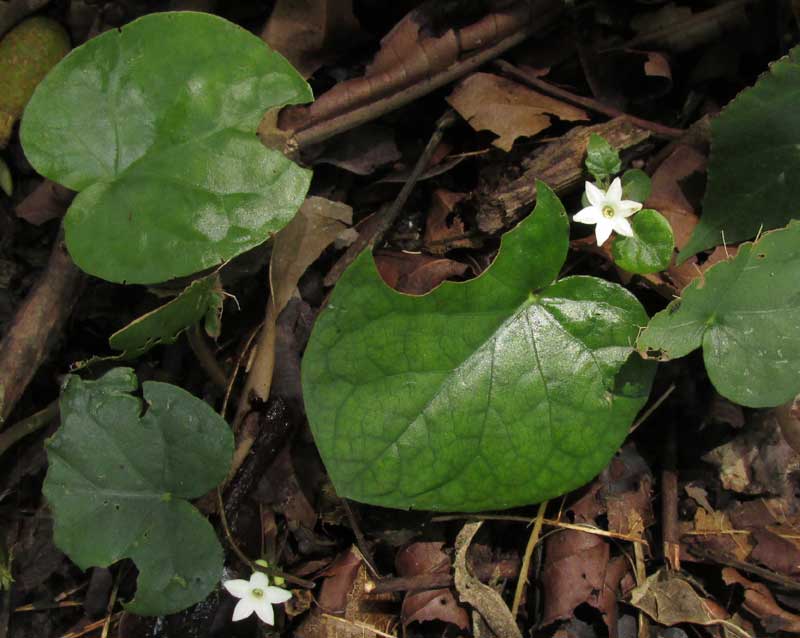
In the northern Temperate Zone such fleshy-leafed herbs with delicate looking little flowers appear in the spring woods -- species like Wild Ginger and Partridge-Berry -- but in the tropics such plants are a little unusual. When I tugged on a flower, it turned out to be attached to a rhizome creeping horizontally below the leaf litter and rooting at its stem-joints, or nodes, as shown below:
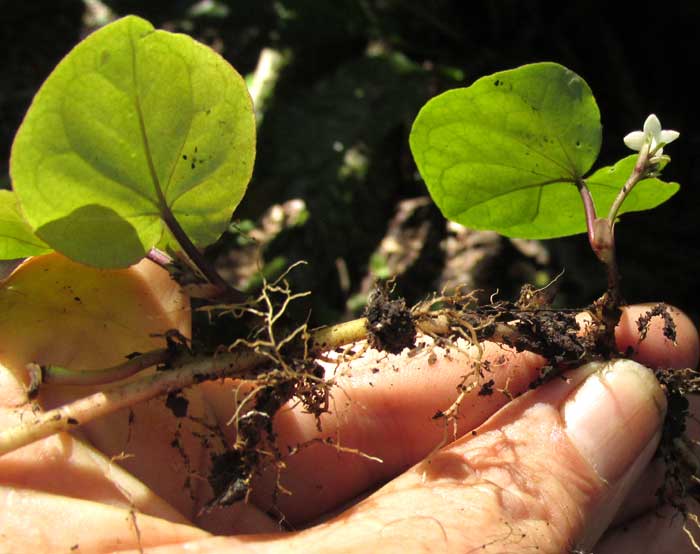
Flowers proved to belong to a small cluster of blossoms, flower buds and developing fruits, all arranged atop a short, thick peduncle, which arose at the base of leaf petioles, as seen below:
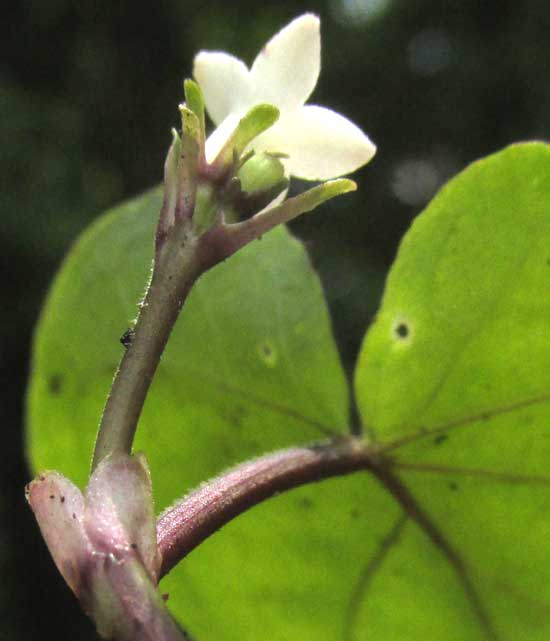
In that picture, notice the conspicuous, papery stipules at the image's bottom, left. When you see such well developed pairs of stipules, automatically it's worth thinking of the huge but mostly tropical Coffee or Madder Family, the Rubiaceae. And that family often produces flowers with a few lobes arising from a cylindrical tube such as this, so already we're thinking of the Coffee Family. In the above picture, something interesting is going on with the flowers, so a closer look is taken, seen below:
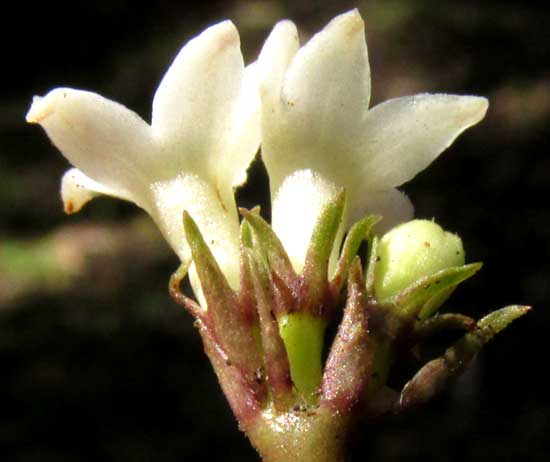
First of all, the bulging, green bottom of the middle flower in that picture looks like an inferior ovary -- one with the flower's sepals, corolla and sexual parts arising at its top, not at its base. That's also a feature of the Coffee Family, and since most flowering plant groups produce superior, not inferior ovaries, it's an important feature. Also, the flower cluster is subtended by two purplish, sharp-pointed "bracts," which are modified leaves. A peep into the tiny blossom's throat doesn't reveal much extra, as shown below:
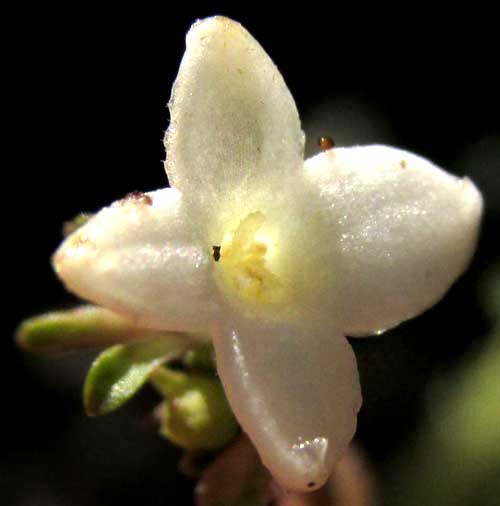
It looks like the flower may have four or so stamens, which is alright for the Coffee Family. One plant in the area had produced a fruit held above the leaf litter on its peduncle, shown below:
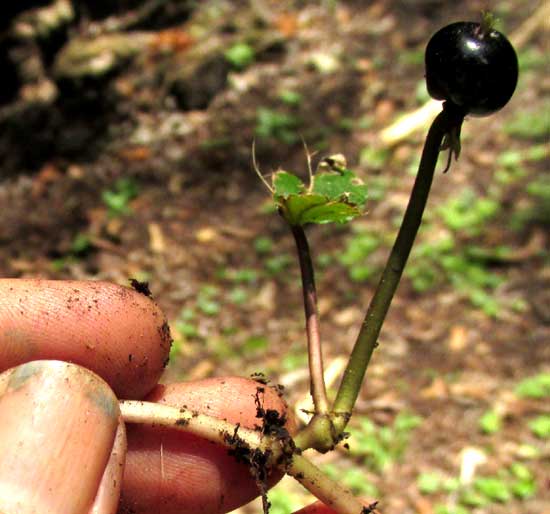
When the fruit was squashed, it looked like a grape inside, with two seeds surrounded by juicy pulp, shown below:
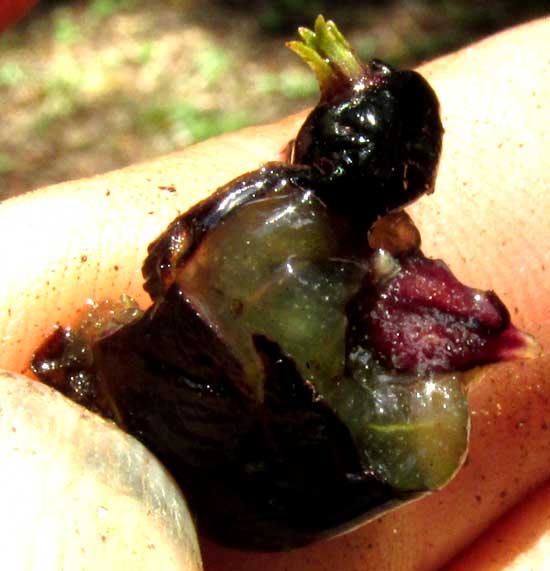
At the fruit's top, the five erect, green sepals confirms that the fruit was developed from an inferior ovary, else the sepals would be below the fruit.
These were all good field marks, and since I had a copy of Paul Standley and Louis Williams' 1975 treatment of the Coffee Family in Guatemala, I felt confident of an easy identification. And such was the case.
Our plant was GEOPHILA MACROPODA, with no good English name, nor even a Spanish name that I can find. It's found in lowland wet thickets and forests from southern Mexico -- not in the arid Yucatan -- south to Brazil and northern Argentina. In Guatemala three Geophila species are listed, but the other two produce red or orange fruits, not black ones like ours, so finding a fruit was a lucky break. In the treatment by Standley and Williams I read that the stolons reach about a meter long (3ft).
I especially enjoyed meeting this little herb, if only because its appearance reminded me so much of species that in my earlier days I delighted in finding on chilly, early-spring days in woods up north. While taking the above pictures, it was a struggle to deal with the intense heat and ravenous mosquitoes, and having those cool, fresh memories in the back of my mind felt good.